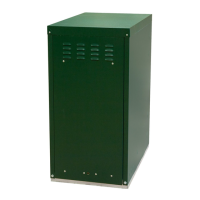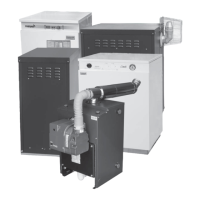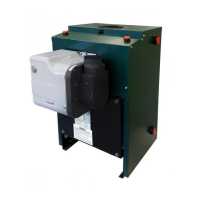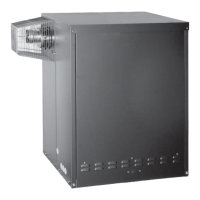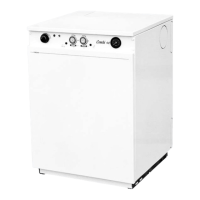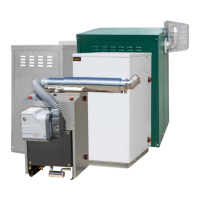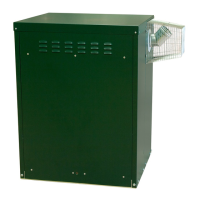Firebird Condensing Boiler
4
22
4.4 - BOILER PIPING
LOW TEMPERATURE HEATING SYSTEMS
Like many other condensing appliances the Firebird boiler will offer its highest efficiency when installed on a low temperature
heating system. Ideally, return water temperatures should be kept below 140 degrees Fahrenheit to aid the condensing
process. Care should be taken that the return water temperatures do not consistently fall below 110 degrees Fahrenheit.
If it is possible for the return water to fall below 110 Fahrenheit, a boiler bypass must be installed. Please refer to the piping
diagram on the following page for piping of the bypass. When replacing an older style boiler, it is important to make sure that
the system has been properly flushed of all debris and contaminants remaining from the previous system. To ensure the
highest possible system efficiency it is recommended to perform a chemical flush of the entire system. Once the system has
been filled it is required to install the X100 corrosion inhibitor supplied with the boiler. Failure to install the X100 corrosion
inhibitor will void the warranty of the boiler.
The following piping diagrams show basic layouts for proper installation of the boiler. These layouts are
not the only acceptable manner in which the boiler can be piped, but are supplied as a guideline.
4
1
2
3
5
6
8
7
910
11
13
14
12
15
15
Low Temperature Central Heating System
Legend
1 - Pressure Relief Valve
2 - Tridicator
3 - High Limit Control
4 - Air Elimination
5 - System Circulator
6 - Zone Valves
7 - Purging Stations
8 - Expansion Tank
9 - Back Flow Preventer / Auto Fill
10 - Ball Valve (to shut auto fill)
11 - Boiler Stand (optional)
12 - Condensate Trap
13 - Boiler Drain
14 - Condensate Neutralizer
15 - Condensate Drain
(piped to drain or pump)
16 - Boiler protection mixing valve
17 - Boiler Circulator
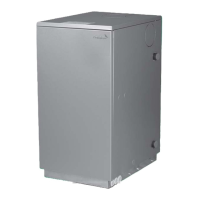
